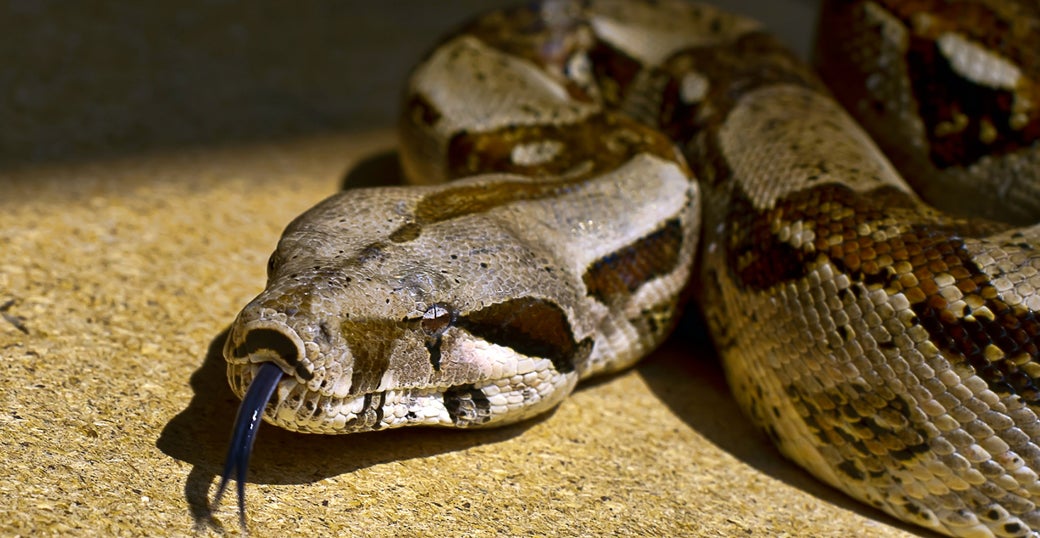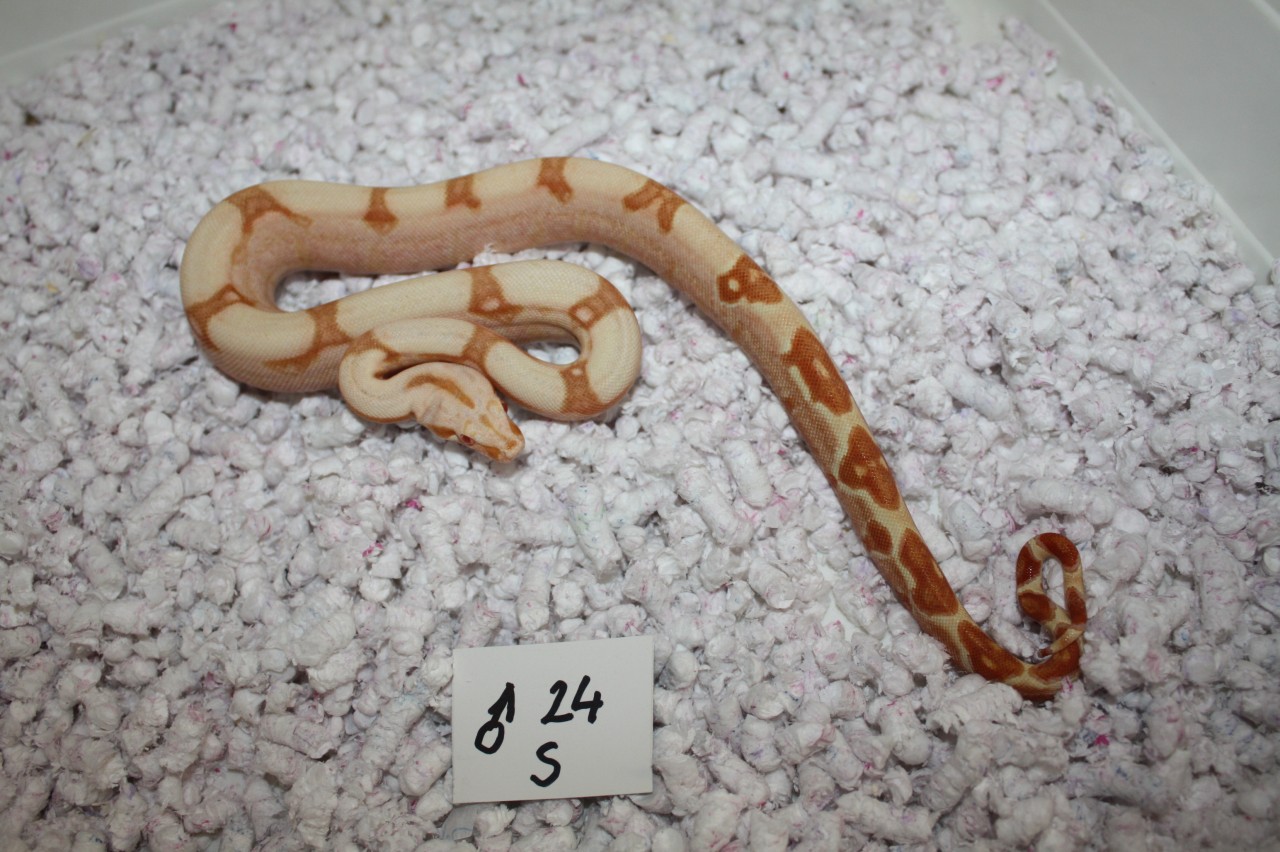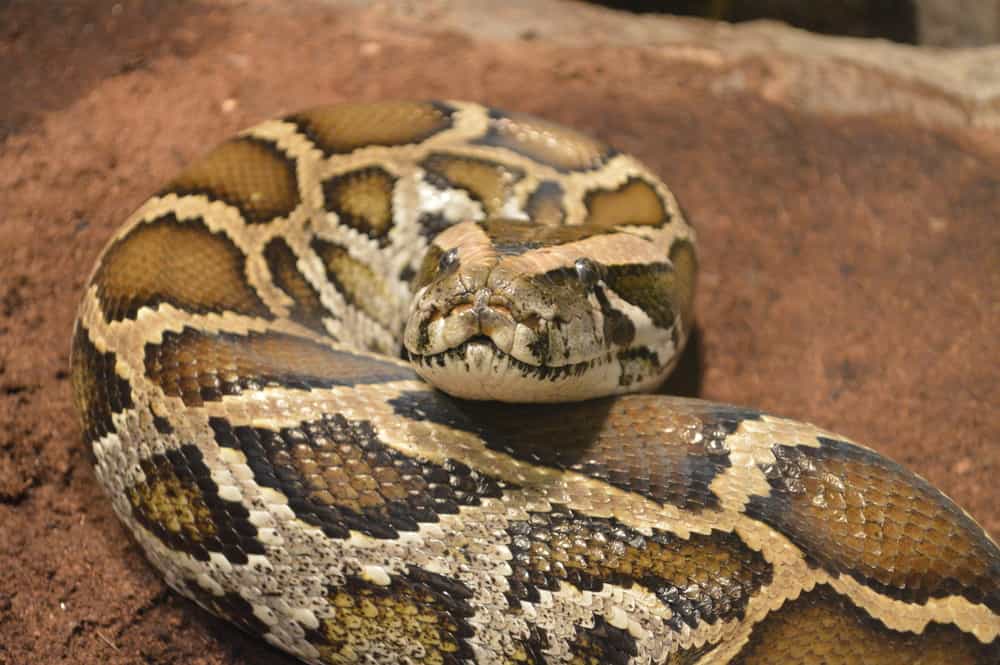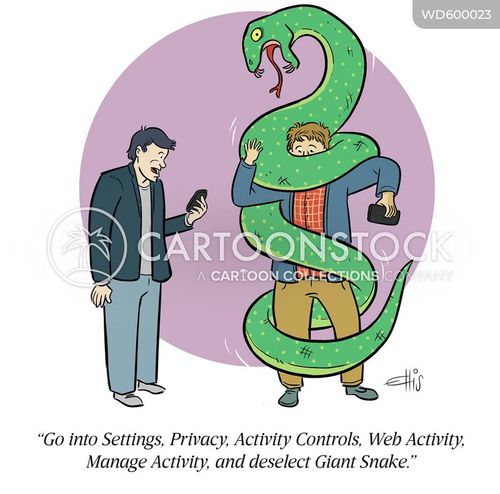

The boa constricts many prey animals, the sizes of which depend on the current size of the boa. Like the jaguar or other important forest predators, catching a glimpse of Boa constrictor is a rare occasion. They are negatively impacted by humans in some areas via habitat destruction and the pet trade, but apart from these factors they can adjust rather well. In captivity this snake has lived as long as 25 to 35 years, but wild ones probably do not live so long. Young snakes have a high mortality rate and not many make it to the larger life stages. Neither parent administers any further parental care. Mothers give birth to 10 to 64 viviparous (or live) young, each of which is 0.5 m long. Thus if a very large boa was given a convenient position around the neck of a human it could be able to suffocate such a foolhardy person, but otherwise the boa is not a threat to human existence even when in close proximity. It is large enough that the boa has few predators but not quite large enough to hunt prey as large as humans. Hissing or coiling would preempt striking, and while this snake has no venom, it does have long, sharp, curved teeth that could cause and stick in a painful wound if the snake were provoked.

It is neither an easily agitated animal nor is it prone to defending itself aggressively. However, even though the boa constrictor looks intimidating it actually is not very dangerous. When the animal stops moving, the boa swallows it whole, head-first. The boa gets its meal by first striking the prey with its sharp teeth, secondly lifting the prey and coiling the long serpent body around it, and thirdly killing the prey by constriction, that is, tightening its body around the prey to strangle it. Large snakes sit and wait for prey to present itself the boa may also position itself by a mammal burrow or some other prey’s dwelling place and wait for days before moving on. Aided by their prehensile tails, these snakes are good at climbing. Some big ones may even be active during the day. While active, younger boas are more likely to move through the trees while larger individuals tend to stay on the ground. The boa is able to be active at dusk or night because it can hold body temperature without basking in the sun. Males have more distinct ‘anal spurs’ than females and use them to stroke the female during courtship. Younger boas are brighter, and the splotchy pattern may blur as some grow into large adults.īoas fall into a group of primitive snakes that still have the bones of a pelvis and vestigial ‘legs ’ on the outside of the body-the only visual cue that these bones remain is a small horny spur on either side of the snake’s vent. After shedding an old skin, this snake is incandescent. While it may sound like a blandly vested serpent, the boa’s scales can be brightly iridescent. The tail may be banded in different colors, particularly shades of red, yellow, or black. This snake is colored cryptically: the body is mostly light brown to gray with dark brown to black lateral patches with lighter centers. Its head and dorsal scales are small and smooth.

However, when it is found in Costa Rica, the huge boa constrictor is distinct secondly because it lacks labial pits on its head and has a dark brown stripe from its snout to its neck.

It would be unusual to encounter the small, beige eyes close enough to see the vertical pupil. The boa ranges from Mexico along both slopes through Central America and down to northern Peru, Paraguay, and central Argentina. It can survive in shrub, savannah, cultivated fields, secondary growth in lowland dry, moist, and wet forests, and in premontane moist and wet forests. This large snake lives on the ground and in the trees from sea level to 1,000 m in elevation.


 0 kommentar(er)
0 kommentar(er)
